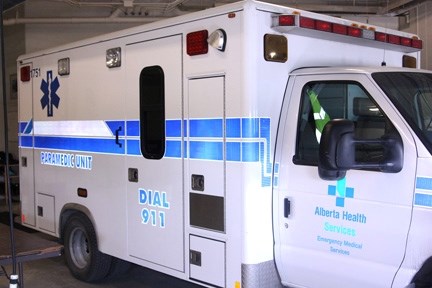Dear Editor,
“The time for talk Is over…” While inspiring and catchy, it is not contextually accurate.
I was at a meeting Feb. 21 with Highwood MLA RJ Sigurdson, who has been tasked with repairing an Emergency Medical Service response that is in crisis. Assignment: Fix the provincial ambulance problem. Now, in fairness it is a very deep, very widely spread, very complex problem that is more than a decade in the making. Therefore, it will take more talk, more action and much, much more money to get it to where it should be.
The meeting was attended by a gaggle of concerned citizens as well as a significant number of experienced EMS personnel. This latter group contributed ideas gleaned from years of on-the-job observations. Personal stories from a professional perspective gave the conversation real weight.
Sigurdson as well as the speakers were very sincere, there was no doubt about that. The descriptions of the problems were as disturbing as they were unsurprising. Being an emergency medical professional is a tough job.
In order for the system to function effectively, the flesh and blood participants who show up and do the work have to have a very high level of integrity, specialized training and, perhaps most importantly, emotional toughness. As a system, EMS requires a code of conduct and procedural thoroughness that eliminates the chance of error for the patient while protecting the practitioner from burn-out.
As a non-medically trained observer I have no idea if this lofty goal is achievable, but I do know it is the required standard.
In 2019, the government determined the best way to reduce the cost of service to the public purse would be to no longer offer full-time employment to new hires. The idea was to reduce the cost of overtime and benefits to new employees while taking advantage of the flexibility of part-timers who would now be required to fill shifts on short notice.
The uncertainty for the part-timers plus any sense of permanence caused them to become discouraged and subsequently refuse shifts by calling in sick. That led to excessive pressure on senior full-timers to turn down shifts they were too fatigued to accept and thus leaving ambulances empty.
This faulty employment strategy led to a cavalcade of burn-out. When combined with a serious misuse of power in the form of retribution for attempts to report problems that were developing in the line of duty, the situation fell into near chaos.
The original plan was completed in September of last year but its release was delayed to allow for the UCP leadership race. So even though Sigurdson sincerely promised to work as fast as he can, he was unable to offer a timeline for implementation.
One participant pointed out with more than a little frustration that the R-Star Program was developed in a matter of a few weeks. And that program (the clean-up of orphaned wells) will invest in excess of $100 million tax dollars to incentivize oil companies to do what they were contractually and legally required to do on their own.
Why is it this EMS dilemma requires a government study of undetermined length with no guaranteed recognition of obvious financial implications? Call this “study” what it really is: a government “stall” tactic to get us past the election.
The time to recognize and act on this crisis is now.
Wilson Southam
Okotoks




